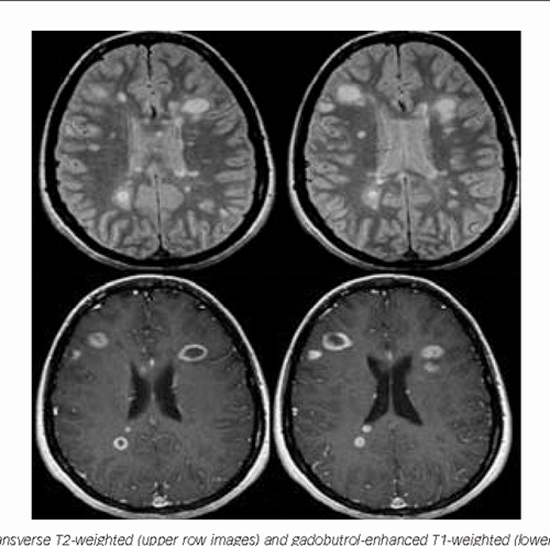The relationship between enhanced plaques with Gadovist and Magnevist contrast brain magnetic resonance imaging and the neurological deficit in the acute phase of relapsing remitting multiple sclerosis
both Magnevist and Gadovist could be used as the contrast material to detect enhancing plaques in relapse phase of multiple sclerosis

Background: Magnetic resonance imaging (MRI) is the standard method for observing brain plaques and contrast material injection is necessary for demonstrating the active plaque.This study compared the rate of enhancement of plaques with Gadovist and Magnevist in relapse phase of MS.
Methods: In this double blind study, after neurological examination of 62 patients in the attack phase of MS, two consecutive MRIs were performed with Gadovist and Magnevist with 48 hours interval. The two contrast materials were injected in first and second imaging randomly and the reporting radiologist was blind about the contrast material.
Results: With both contrast materials, the probability of enhancement of supratentorial plaques was higher than the infratentorial ones. The probability of observing a symptomatic infratentorial enhanced plaque was higher than the supratentorial region and when the symptoms were due to supratentorial lesions, the corresponding enhanced plaque was more probable. It was detected that the number of enhanced plaques was the highest if the imaging was performed in the second week after the relapse, although there was no statistically significant difference when the imaging was done within the first month after the beginning of the symptoms.
Conclusion: It seems that both Magnevist and Gadovist could be used as the contrast material to detect enhancing plaques in relapse phase of multiple sclerosis.
Keywords: Contrast; Magnetic Resonance Imaging; Multiple Sclerosis; Neurological Deficit.






ارسال به دوستان